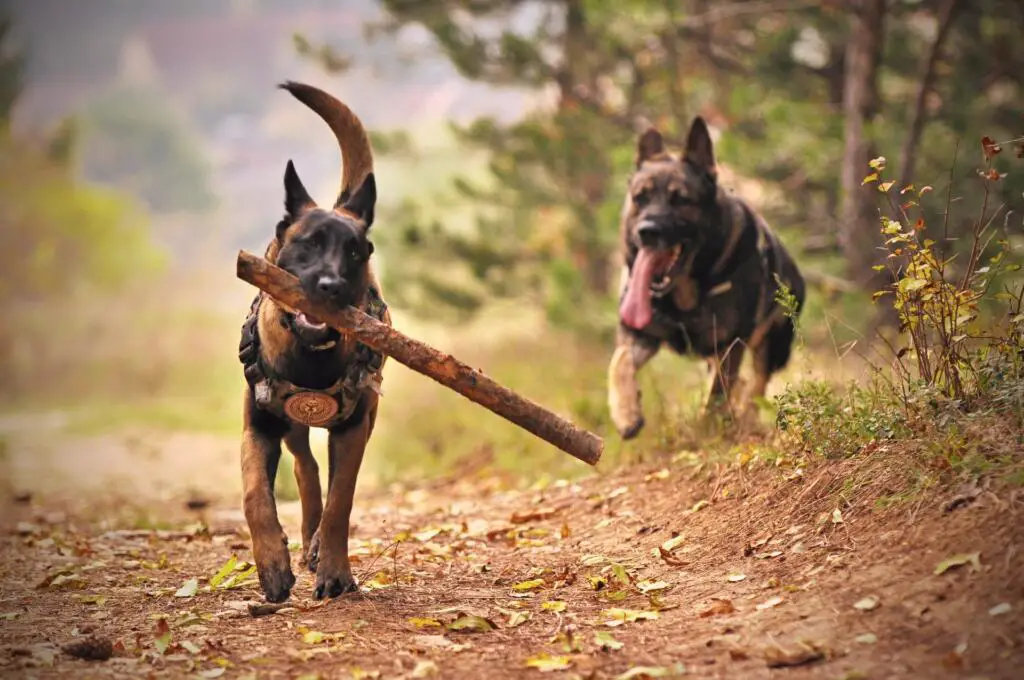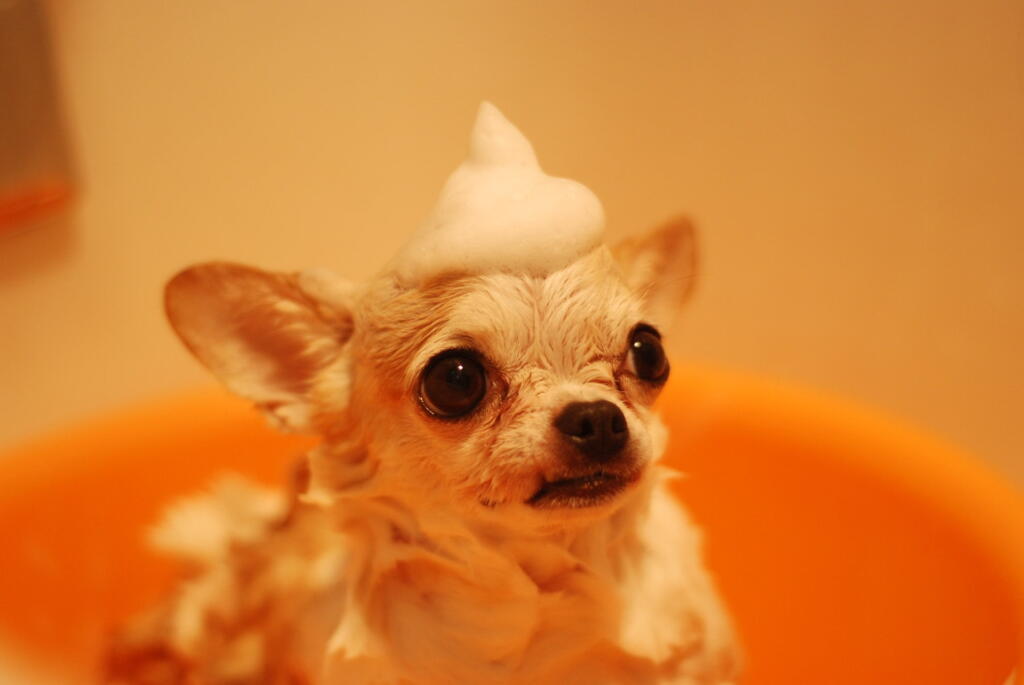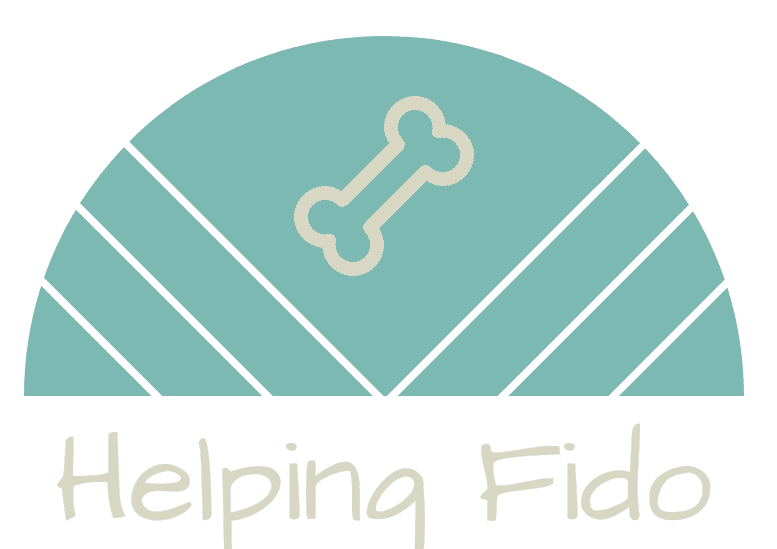Dogs and humans have a long and strongly interconnected history. Many could argue the domesticated dog as we know them would not exist without humans and it could also be easily argued that modern man would look vastly different without our connection to our canine companions. Over time, our bond has grown and we have developed and care and care alike relationships with dogs. They protect us and keep us company and we in turn feed and care for them day in and day out- and this includes keeping up with good grooming and bathing routines.
Why dogs need baths in the first place

Like all mammals, including humans and canines, there are countless sebaceous glands that are attached to each and every one of the hair follicles that cover the body. Humans have most on the head but they can be found in any hairy area of the body; our canine companions also have many of these glands all over their bodies.
Dogs Naturally Magazine reports that “…dog’s sebaceous glands are present in large numbers near the paws, back of the neck, rump, chin and tail area. The sebaceous glands produce a light, oily substance called sebum that keeps the skin healthy, well moisturized and shiny. Sebum also has natural antibiotic properties that provide the first line of defense against bacteria.”
The sebum is what gives you dog, and yourself too, the distinct smell that we come to associate with a certain person or a particular animal. When you use dog shampoos you wash away that accumulated sebum and pollutants and are essentially resetting your dog’s smell.
How dog dry shampoos help control body odor
Between the normal washings and routine grooming sessions, the sebum can build up on the skin and fur of your pooch. This buildup leaves the fur and the skin as well looking and feeling greasy, dull, unclean, and ugly. The more it is allowed to build-up, the stronger the smell will become. Dirt and pollutants accumulate daily and add to the smell; in fact, it is the environmental pollutants that make your dog smell bad. Healthy levels of sebum are healthy and normal and only create bad odors when toxins build up and allow bacteria to build up and cause odors.
While there is no substitution for traditional water and wet shampoo washing if you cannot get that level of clean at a given moment you can still help your canine companion look and feel and smell better. Used correctly, dry shampoos for dogs made of starch powders and clay, simply absorb the excess oil from the skin and hair or fur. When the powder absorbs the oils and debris from your dog’s fur and skin, it can then be brushed out and removed so your dog’s fur looks cleaner and smells better. It is not a replacement for traditional water-based dog shampoo washings but it is a quick and easy way to fill in the gaps between these washings.
How to wash a dog using dry shampoo

The process for washing your dog without traditional water-based shampoo may seem a bit foreign and appear to be intimidating or overly complex, but in reality it very straightforward. The entire process can be broken down into five basic steps:
- Brush and comb your dog thoroughly before using the dry dog shampoo. You will want to take your time and do a thorough job with the brushing because this will help to remove loose hair, dead skin, and debris. There is no point in wasting the powder on hair that will fall out easily or on debris that can be easily brushed away beforehand.
- Apply the dog shampoo powder to your dog’s fur. Be sure to read all instructions, warnings, and protocols on the label before you begin. Follow all instructions carefully and start working along your dog’s back and then moving down towards the legs and stomach. Leaving the head and tail for last.
- Massage the powder in gently with your fingers, making sure to work it down into the deeper layers of your dog’s coat. You will then want to brush slowly and carefully through your dog’s coat to distribute evenly and to coat all of the hairs and work it down to the skin level. Follow the specific label instructions about how long to leave it in the fur before beginning to brush it out.
- Keep away from your face and your dog’s face as well. Be sure to keep powder out of your dog’s eyes, ears, and nose when applying. Most dog shampoos of this nature advise against using it any further than the dog’s neck and throat to help avoid accidental contact with the face. It is also best to use powdered shampoos in an enclosed area so winds don’t blow the powder around while it is being used.
- Finish brushing and then wipe down your pup. Use baby wipes, a damp washcloth, or dog wipes to clean your dog’s face, feet, and back end to remove any remaining powder so it doesn’t get in their face while they clean themselves throughout the day.
Words of caution and consideration
While the answer to the question of how to wash a dog without shampoo can be fairly easily answered with a convenient and time-saving option, it is important to be aware of possible drawbacks and concerns. Here are a few things to keep in mind if you decide to use dry shampoo for dogs the next time your fury companions need to be groomed:
- Watch the pH of any dog shampoo or cleanser as anything too far off neutral can irritate the skin and dry it out.
- Only use dry shampoos made specifically for dogs as there are common ingredients used in products for humans that can be toxic for dogs.
- Even some essential oils contain plant compounds may not be safe as many plants can make dogs sick to the point that they need pet medication.
- When grooming, brushing, or cleaning your dog, always make sure he is standing on a non-slip surface and try to limit how much they can move around.
- Watch your dog closely after using a dry shampoo or any new product for the first time to catch any signs of an allergic reaction.
- Remember that too much of a good thing can be a bad thing and powder shampoos can remove too much oil and damage your dogs’ fur and skin if used in excess.
- You also risk clogging the hair follicles and either stunt healthy fur growth or cause the fur to start to fall out prematurely.
- Always read the label on any shampoo product you use, even if you have used it before, to ensure you are keeping your dog and yourself safe.
- If your dog has any special care needs or health issues be sure to talk to your vet and use only products that they recommend or say are safe for your pooch.
While there is no substitution for traditional water and wet shampoo washing, dry shampoo for dogs is an option that can be used safely and efficiently with the proper care and attention.
